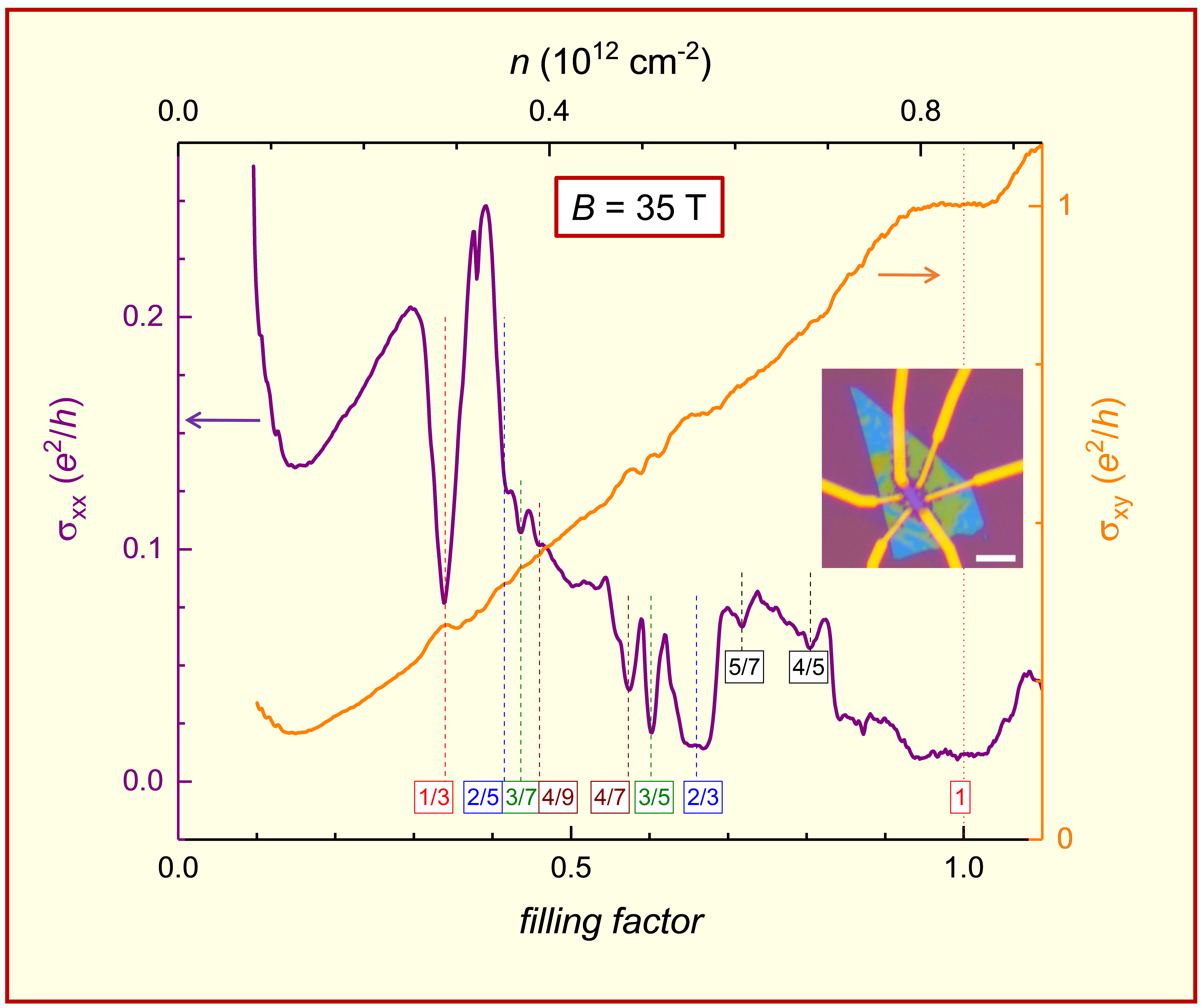Uli Zeitler, HFML Nijmegen.
The fractional quantum Hall effect (FQHE), observed in low-temperature magnetotransport experiments in two-dimensional (2D) electron systems and caused by the electron-electron interaction, can be regarded as an ultimate proof of device quality in terms of quantum mobility, homogeneity, and low residual impurities. Until recently, the observation of a FQHE in graphene, the two-dimensional form of carbon, had been limited to devices based on mechanically exfoliated graphene, whereas there was a controversial discussion if graphene produced by chemical vapor deposition (CVD) could support FQH states at all. Using low-temperature high-field magnetotransport experiments up to 35 T, scientists from RWTH Aachen in collaboration with HFMLEMFL researchers have now succeeded to observe the FQHE in CVDgrown graphene (Figure). The devices used for these experiments consist of hexagonal-boron-nitride / CVD-graphene / hexagonalboron-nitride heterostructures patterned into µm-sized field effect transistors in the form of a Hall bar. Several well-pronounced FQH states are resolved and their excitation gaps are comparable to high-quality devices based on exfoliated graphene. We regard these results as an unambiguous prove that the high quantum mobility in CVD-grown graphene equals that of mechanically exfoliated graphene flakes. This can open a pathway to a new generation of large-area ultra-high-quality devices using a scalable growth of 2D materials based on CVD techniques.

Figure: Longitudinal conductivity σxx (left axis) and Hall conductivity σxy (right axis) in the lowest Landau level of a high-quality CVDgrown graphene Hall bar as a function of filling factor (bottom) or electron concentration (top). The vertical lines mark the fractional quantum Hall states observed, indicating an exceptionally high quantum mobility. The inset shows an optical-microscope image of the etched and contacted h-BN/CVD-Gr/h-BN Hall-bar structure with a 10 µm scale bar.
Fractional quantum Hall effect in CVD-grown graphene, M. Schmitz, T. Ouaj, Z. Winter, K. Rubi, K. Watanabe, T. Taniguchi, U. Zeitler, B. Beschoten, and C. Stampfer, 2D Materials 7, 041007 (2020).
https://iopscience.iop.org/article/10.1088/2053-1583/abae7b
Contact: u.zeitler@science.ru.nl






